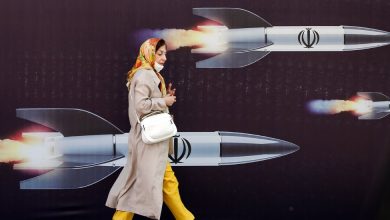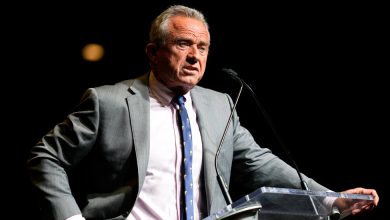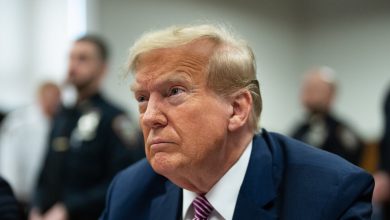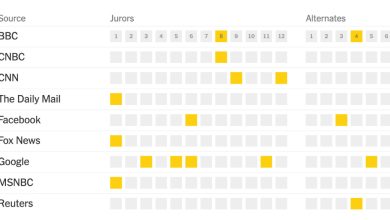Hiram Maristany, ‘People’s Photographer’ of Spanish Harlem, Dies at 76

Hiram Maristany, a self-taught photographer who documented both Spanish Harlem’s everyday rigors and its vigorous cultural legacy from the inside for nearly six decades, died on March 10 in St. Petersburg, Fla. He was 76.
The cause was cancer, his son, Pablo, said. A lifelong resident of East Harlem, Mr. Maristany was visiting a friend in Florida when he died.
Given a camera by a social worker on his block when he was 13, Mr. Maristany was still a teenager in 1963 when his vivid black-and-white photographs appeared on NBC-TV’s “Show of the Week” in a segment titled “Manhattan Battleground” and were published in a two-page spread in The New York Times Magazine.
“The pictures here, with Hiram’s comments, were shot with a borrowed camera,” the magazine article said. “His had been stolen.”
Mr. Maristany’s oeuvre captured the post-World War II diaspora from Puerto Rico in unvarnished images that reflected East Harlem’s poverty and congestion. But they also conveyed his profound compassion for his community.
As a founder and official photographer of the New York chapter of the Young Lords, the Chicago-based group of Puerto Rican community agitators, he gained the access and credibility to portray East Harlem as a neighborhood that needed help but that was also trying to help itself.
“One of the things that I had to deal with as a young man was that all the images depicting Puerto Ricans were negative,” Mr. Maristany said in a recent round-table discussion in connection with the exhibition “Greater New York,” a survey of local artists at MoMA PS1 in Queens. “We were either committing a crime or a crime was being perpetrated against us. We were always in handcuffs. Our sisters were depicted as teenage mothers — without any morals or ethics.”
“Being naïve,” he said, “I felt that I could address all those negative issues.”
The Times in 2019 quoted him as saying: “When I documented, I was not doing it from the outside in, but from the inside out. I knew if I don’t take these images, we’re going to leave it to someone who doesn’t know the first goddamn thing about us, and they’re going to define everything there is to know about us.”
Mr. Maristany evolved into, as Sotheby’s put it last year, “one of the most prolific and consequential Latinx photographers of the latter half of the 20th century.”
Reviewing “Down These Mean Streets,” an exhibition at El Museo del Barrio in Manhattan inspired by the 1967 book of the same title by the Spanish Harlem author Piri Thomas, Holland Cotter wrote in The Times in 2018:
“Mr. Maristany works in a genre that blends documentary and portraiture. He sees what’s wrong in the immediate world he lives in — the poverty, the crowding — but also sees the creativity encouraged by having to make do, and the warmth generated by bodies living in close, affectionate proximity.”
In 1969, Mr. Maristany helped a fellow artist, Raphael Montañez Ortiz, establish El Museo del Barrio, a leading Latin American cultural institution He was its director from 1974 to 1977.
Early on in his career he resolutely he said that he championed “dignity over fame,” meaning that he intended to retain control over his works. But his photographs were later showcased by the museum in the exhibitions “¡PRESENTE! The Young Lords in New York” in 2015; “Culture and the People” in 2019; and “Taller Boricua: A Political Print Shop in New York” in 2021, a display of prints supporting Puerto Rican independence and workers’ rights and denouncing imperialism, all produced by the hundreds, mostly in the 1970s, by activists from the Puerto Rican Workshop.
The workshop flourished largely at the same time as the Young Lords, whose savvy command of the media and theatrical public protests — in one case a “garbage offensive” leading to a spectacular bonfire of uncollected trash; in another, the transformation of a local church into a community center — produced results.


Courtesy of Pablo Maristany
“Children in the funeral march of Julio Roldán,” a 1970 photograph by Mr. Maristany that was part of the 2021 edition of “Greater New York” at MoMA PS1.
“Children at Play” (1965).
Miguel Luciano, a fellow photographer whom Mr. Maristany mentored, said in an email: “Hiram was the People’s photographer here in El Barrio. His lens was full of love for his community.”
Hiram Sebastian Maristany was born on Aug. 10, 1945, in Manhattan to parents who had moved to New York from Puerto Rico. His father, Reinaldo, was in the merchant marine. His mother, Margarita, was a homemaker. Hiram dropped out of high school but later took college courses without getting a degree.
His marriage to Gwendolyn Mitchell in 1976 ended in divorce. In addition to their son, he is survived by their daughter, Alita Maristany; a sister, Dora Ortiz; and a grandson.


Hiram Maristany/Courtesy the Museum of the City of New York
One of Mr. Maristany’s photographs seen in the 2005 exhibition “El Barrio: Puerto Rican New York” at the Museum of the City of New York in Manhattan.
Another of Mr. Maristany’s pictures from “El Barrio: Puerto Rican New York.”
Mr. Maristany recalled in a 2017 NPR interview that when he first told his mother he wanted to be a professional photographer, her response was dispiriting: “Hiram, there’s no such thing as a Puerto Rican photographer,.” “But three months later,” he said, I came back and said, ‘Well, Ma, I’m gonna be the first one.’
“She looked at me and smiled and said, ‘Why did it take you so long?’”




